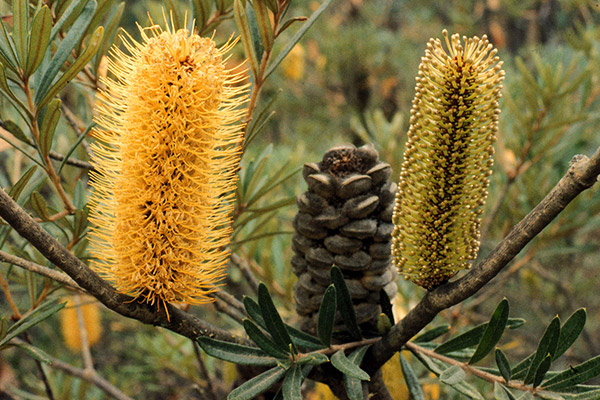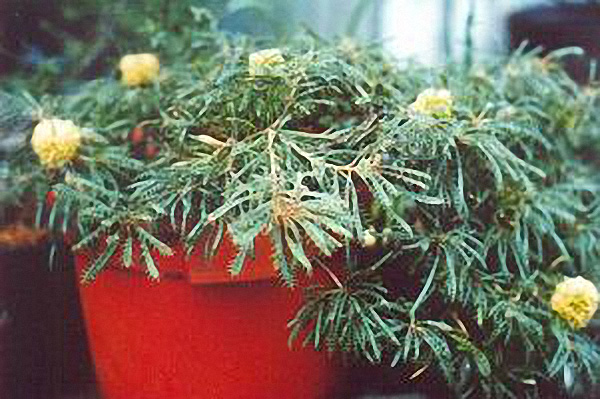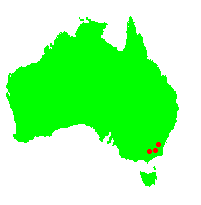General Description:
Banksia canei is generally a shrub to about 3 metres. It has attractive smooth bark and small leaves 2-5cm long and 0.5-2cm wide. The leaves vary between populations in the bush and may be entire (i.e. smooth edged) or serrate and quite prickly. Peak season for new growth is autumn. The serrated leafed form is alledgedly more attractive in flower. Flower spikes are cream to light yellow in colour and may have a bluish tinge at the bud stage. The spikes are about 70mm wide and up to 100 mm long and occur in late summer to early winter (January to June). The seeds are enclosed in follicles attached to a woody cone and are generally retained within the cone until burnt.
In nature, the mountain banksia grows on rocky, sometimes loamy, soils on mountain slopes, and a slightly heavier soil may suit it in the garden (though drainage must remain good). The plant is fire-sensitive in that it does not have a lignotuber for vegetative regeneration after bushfires. The species relies on seed for regeneration. In gardens it can be slow growing, and would suit a sunny or partly shaded position.
A prostrate variant known as B.canei ‘Celia Rosser’ was in limited cultivation some years ago. This form arose from a batch of a hundred seedlings and looked markedly different than any of the regional variants of the mountain banksia. The plants were low, decumbent shrubs with deeply serrated leaves and minute flowers about 20mm x 20mm in size. The discoverer and namer of the cultivar, Alf Salkin, speculated that the plant, because of its prostrate habit, may have been a primitive alpine form and may have been common in globally colder conditions of a million years ago.
Unfortunately, B.canei ‘Celia Rosser’ has not been seen in cultivation in recent years and has probably been lost to cultivation.
Perhaps because of its semi-alpine habitat, B.canei has proved difficult to maintain in gardens at lower elevations. Seeds of this species require stratification (a period under cold conditions – such as in a refrigerator for 60 days) for good germination to be achieved. Cuttings should be successful but may be slow to strike.
The species is closely related to B.marginata.

Banksia canei
Photo: Brian Walters

Banksia canei ‘Celia Rosser’
Photo: Alf Salkin
 Australian Native Plants Society (Australia)
Australian Native Plants Society (Australia)